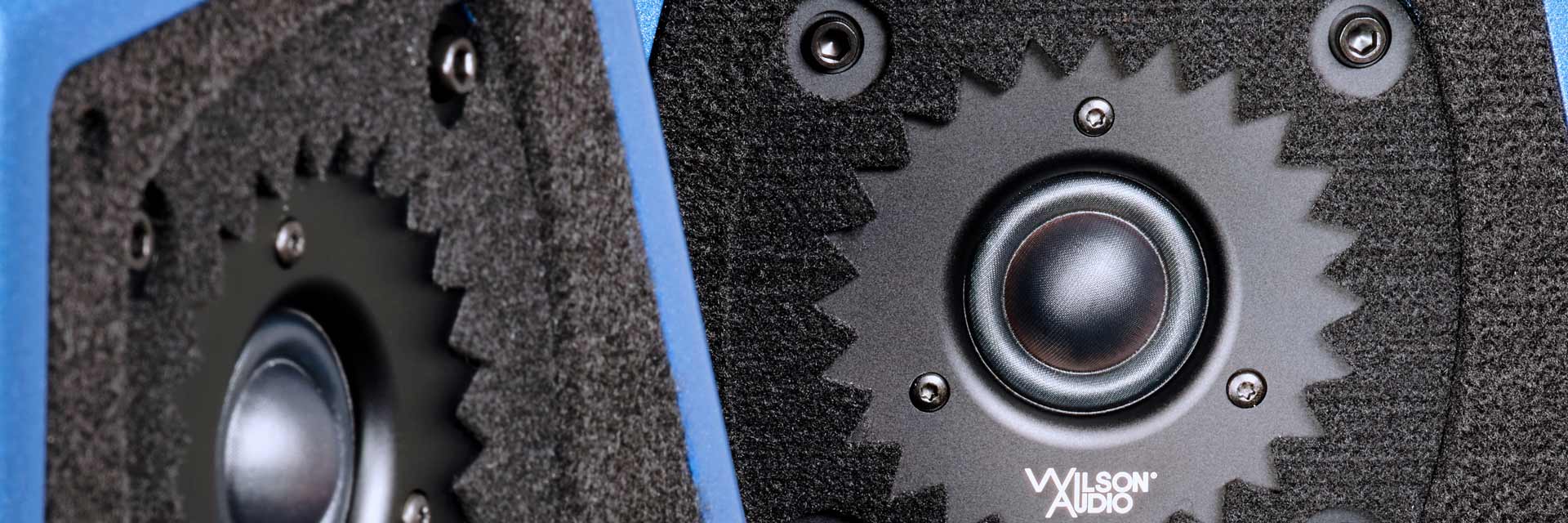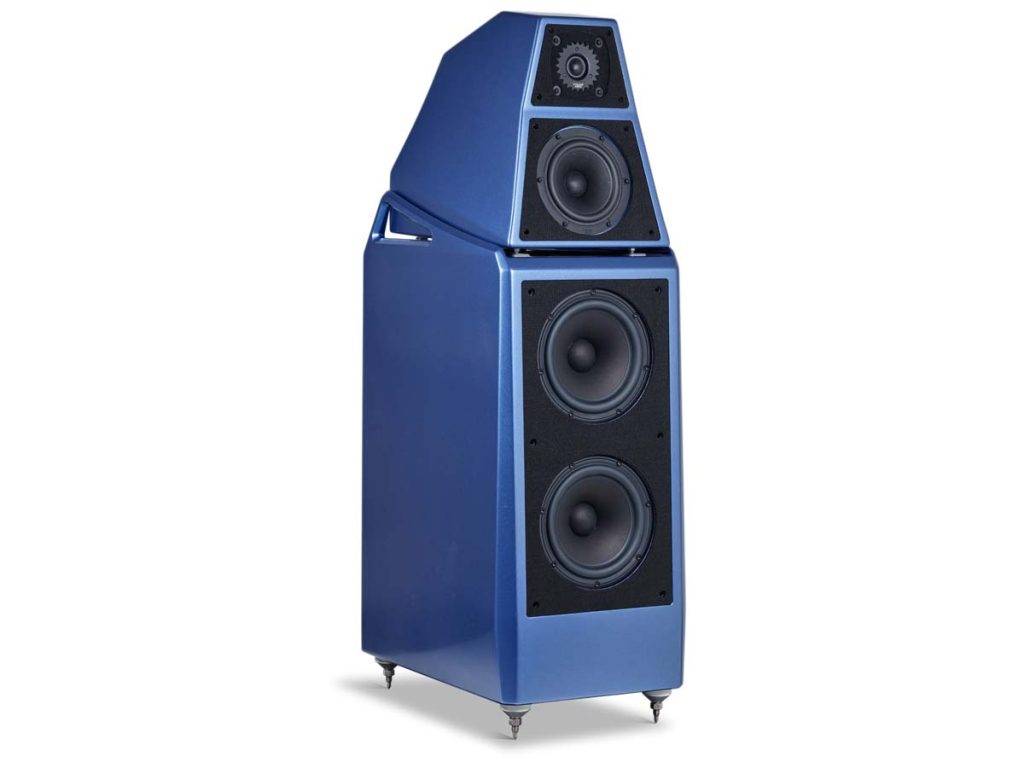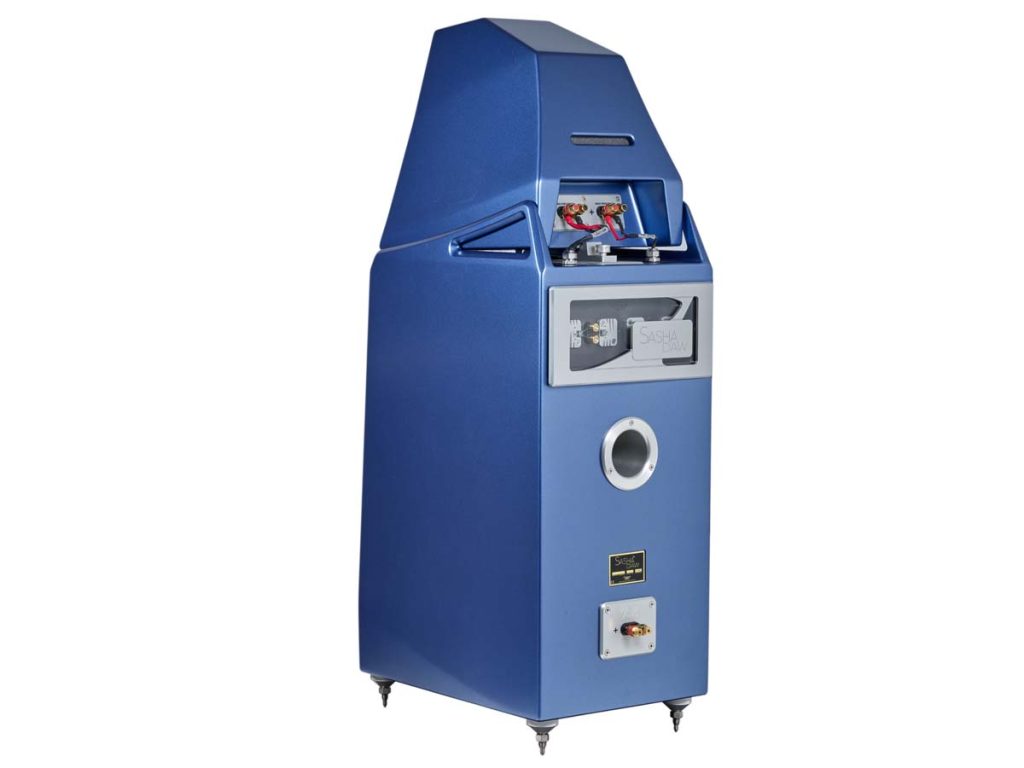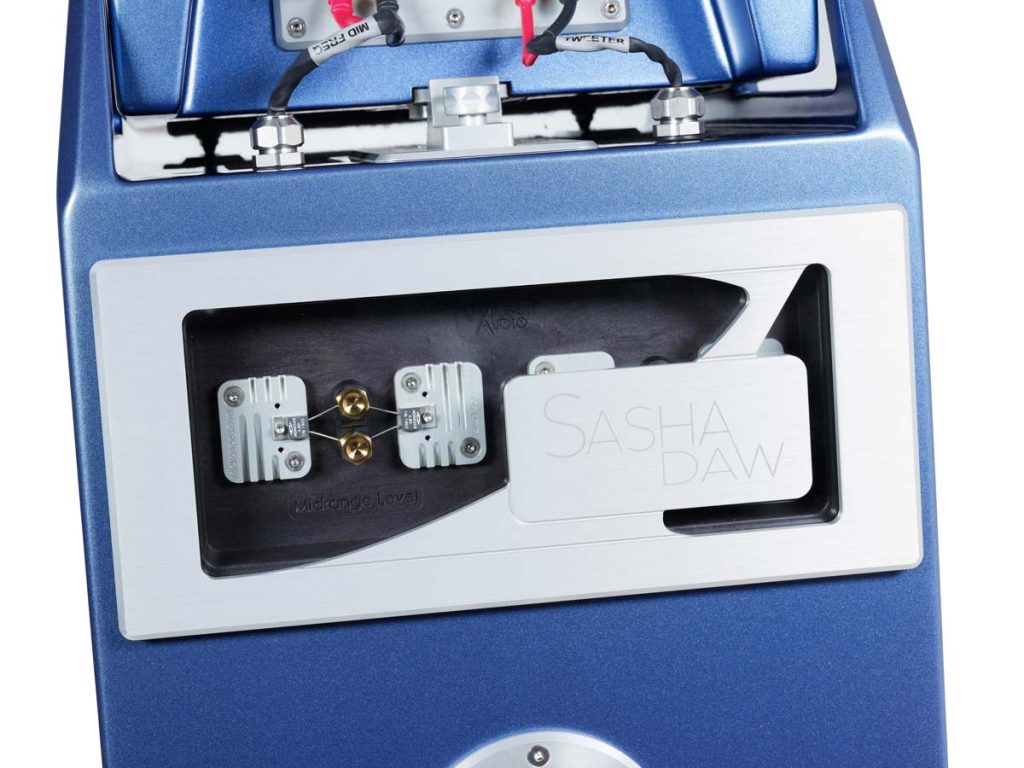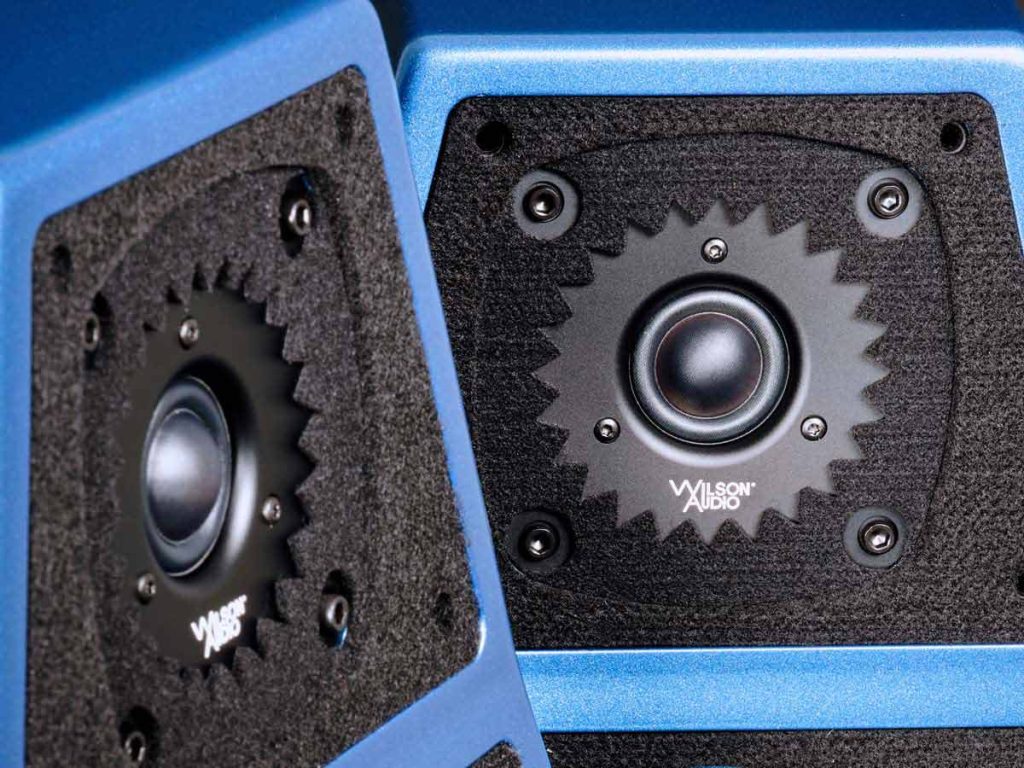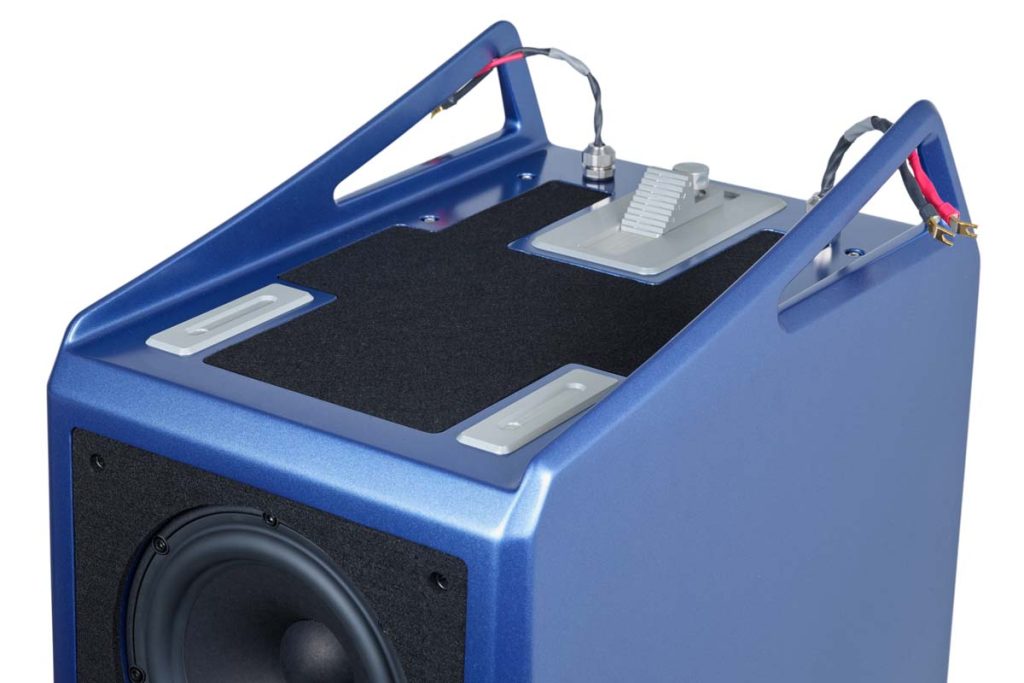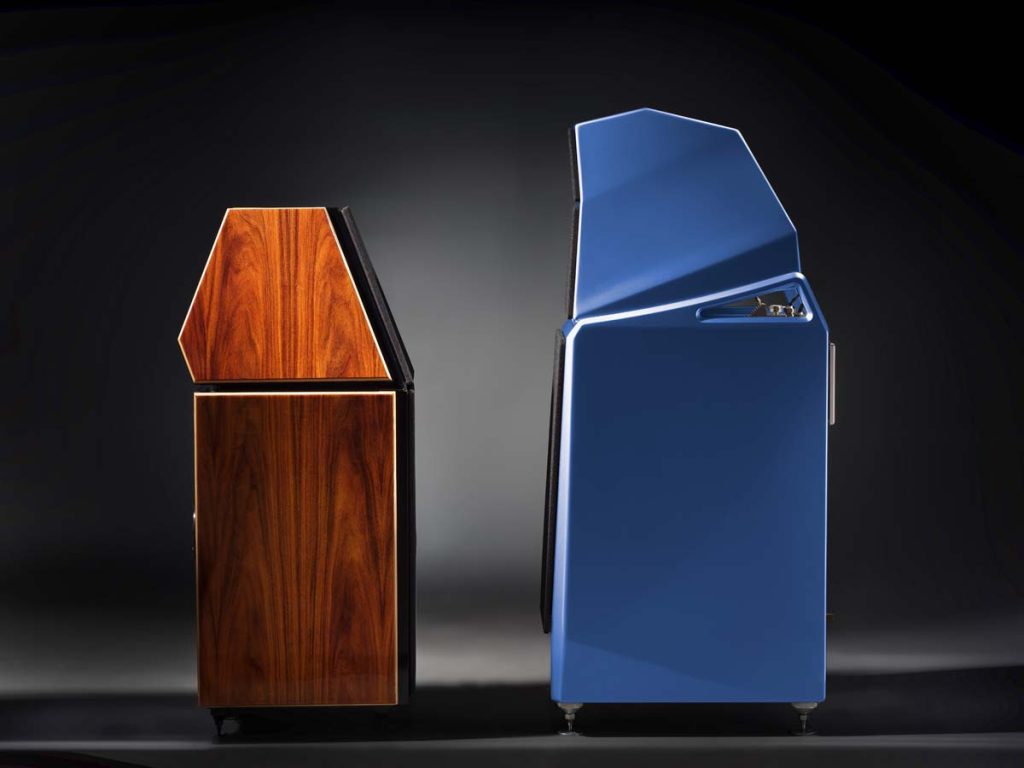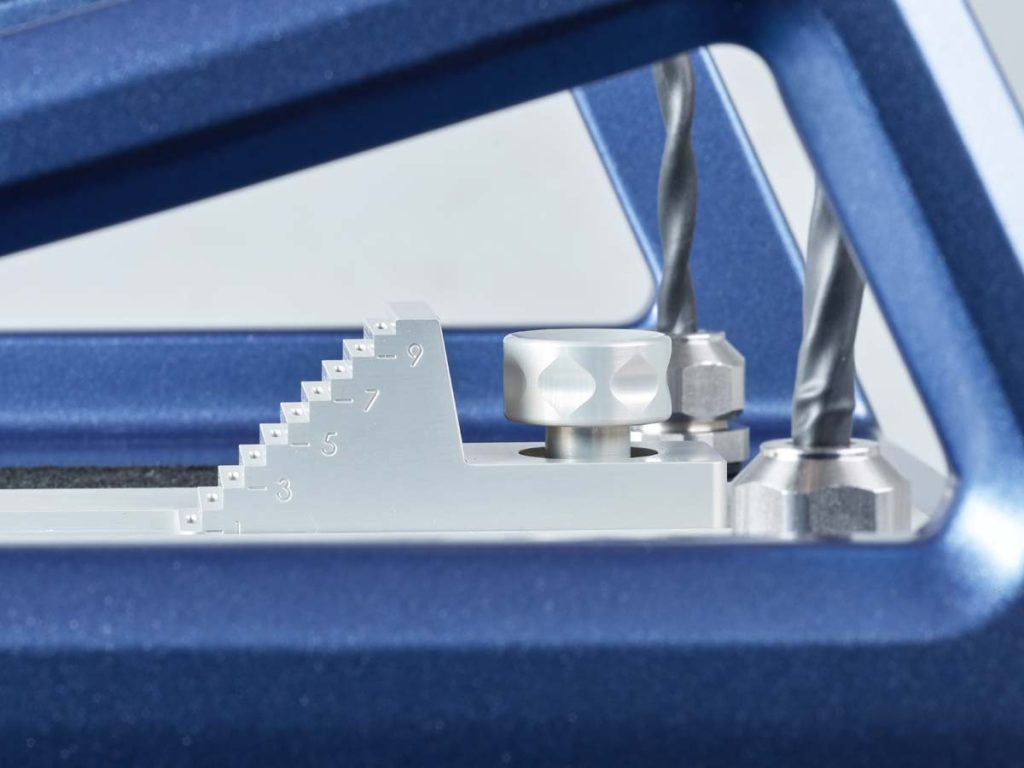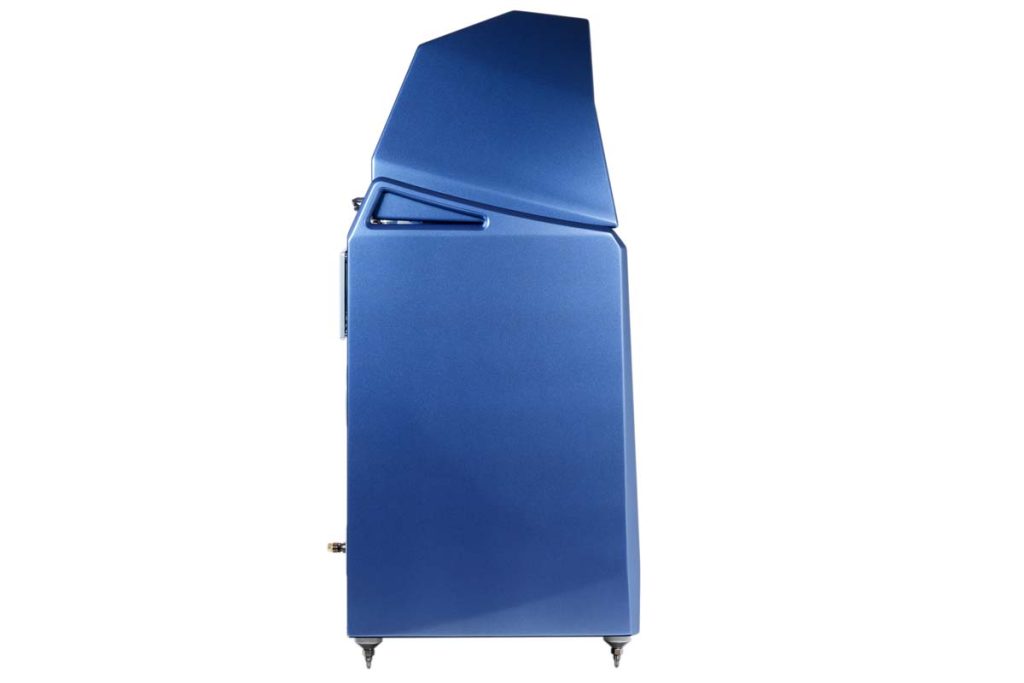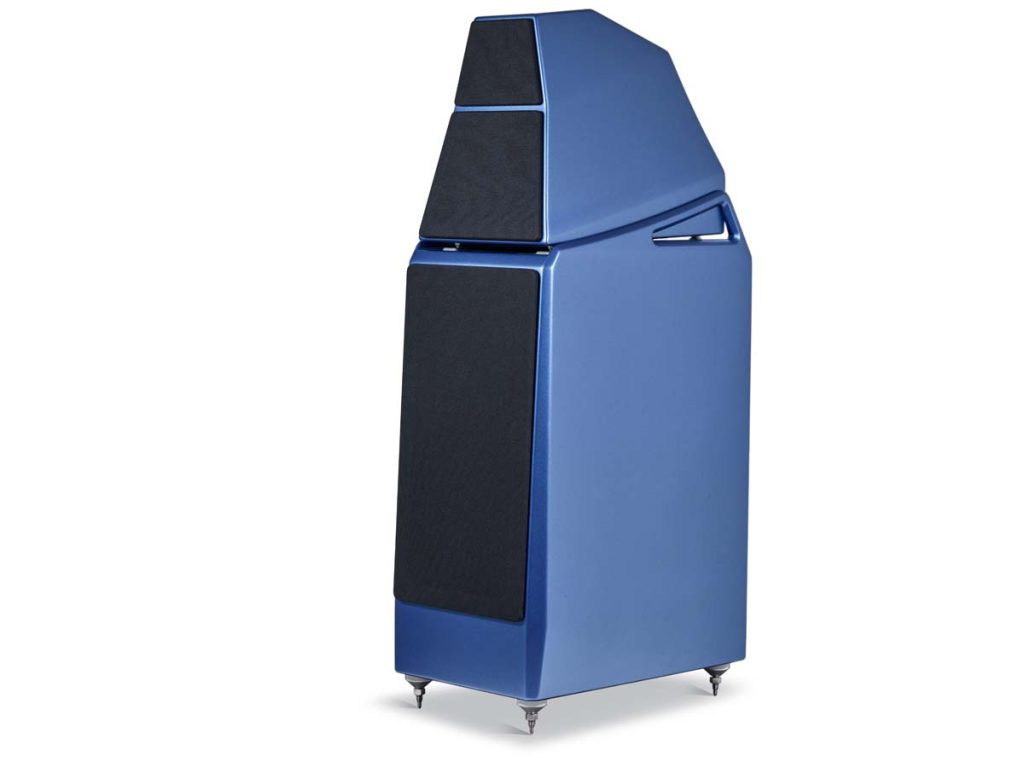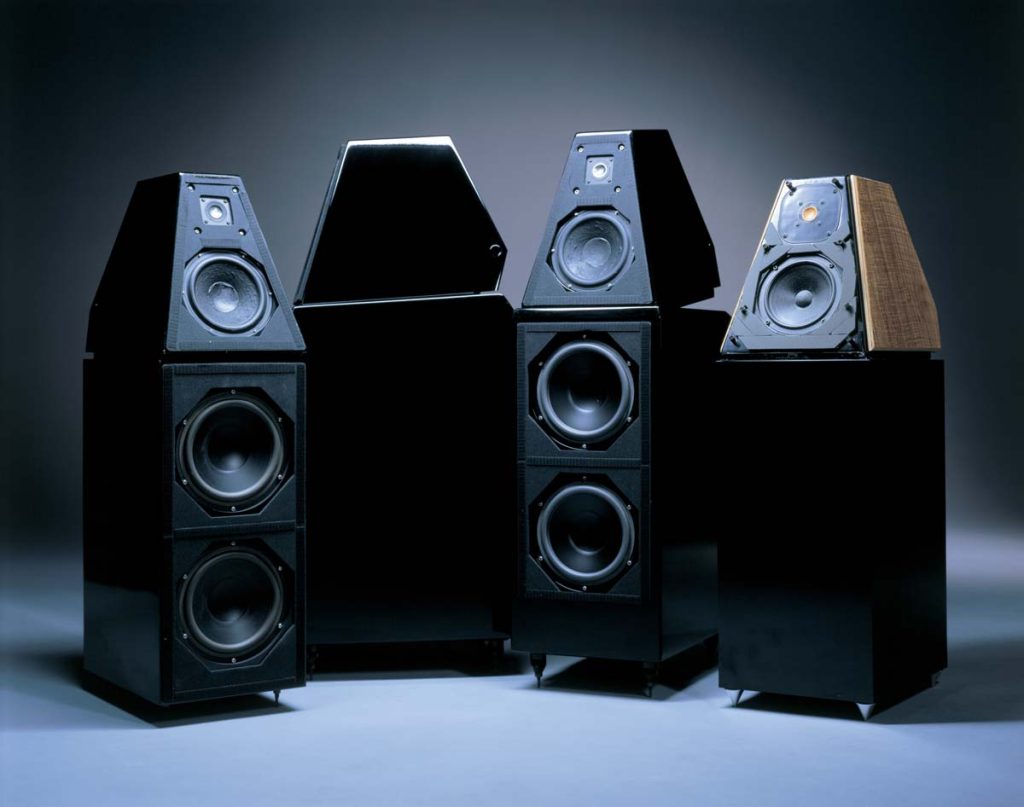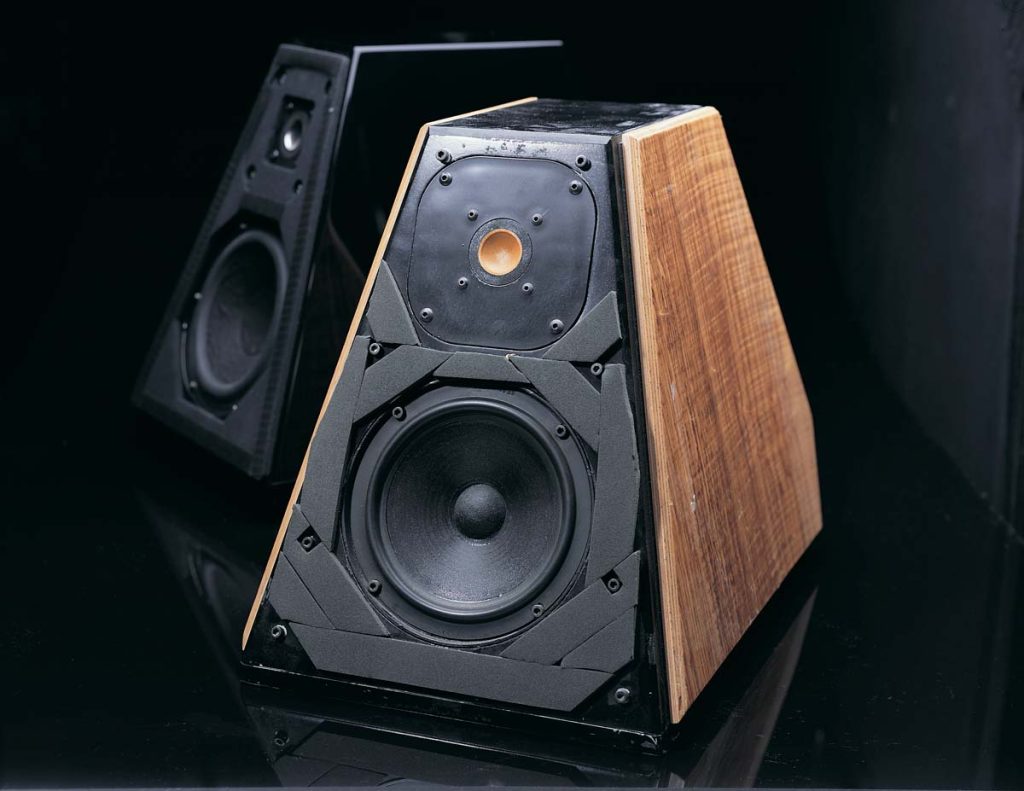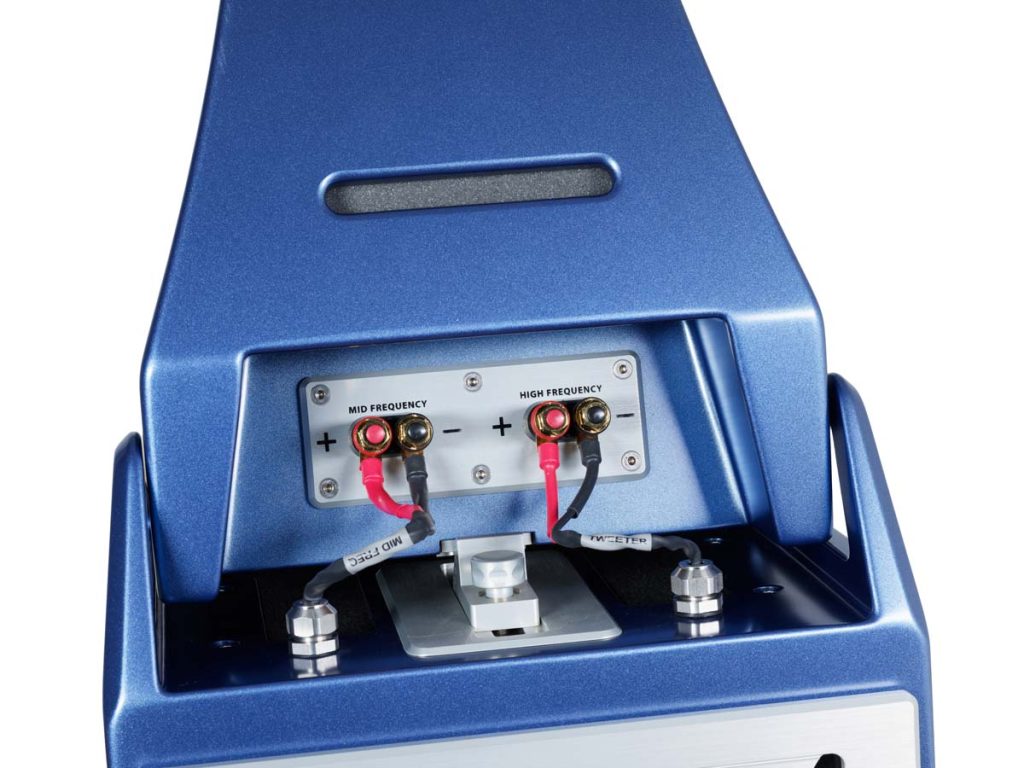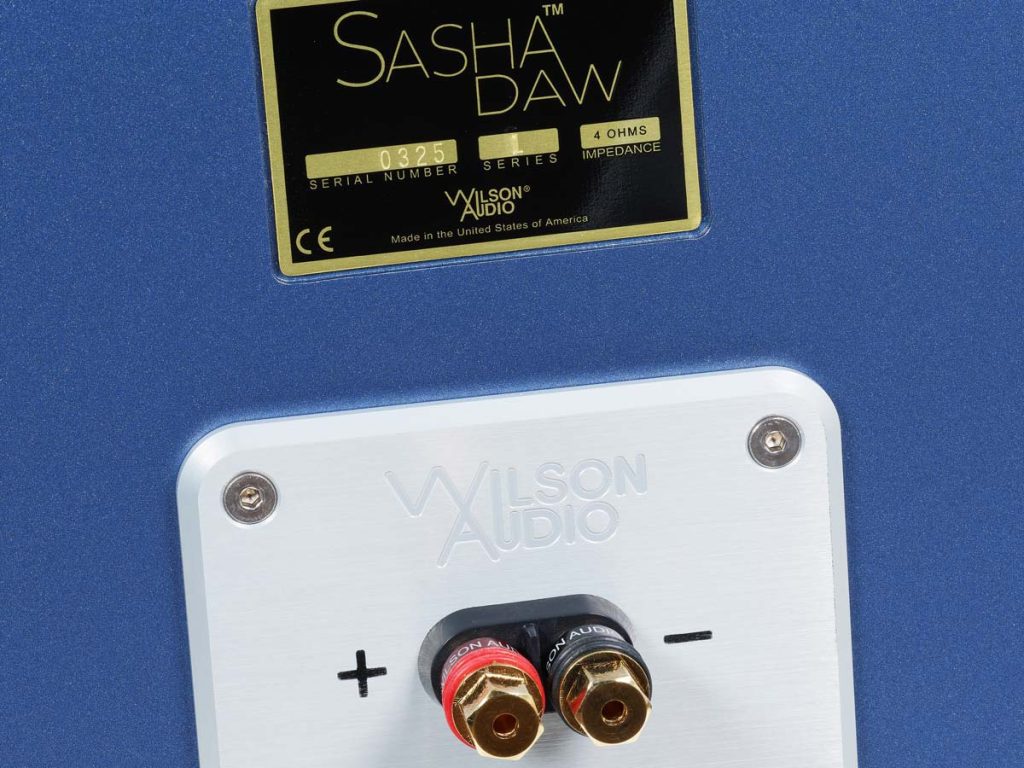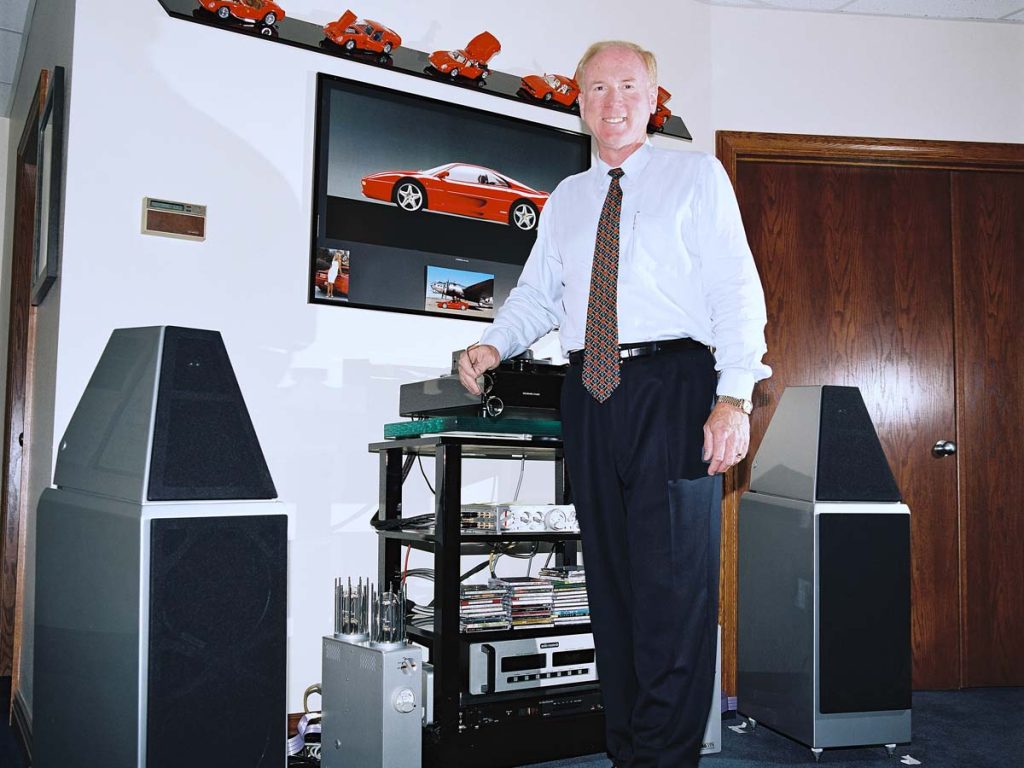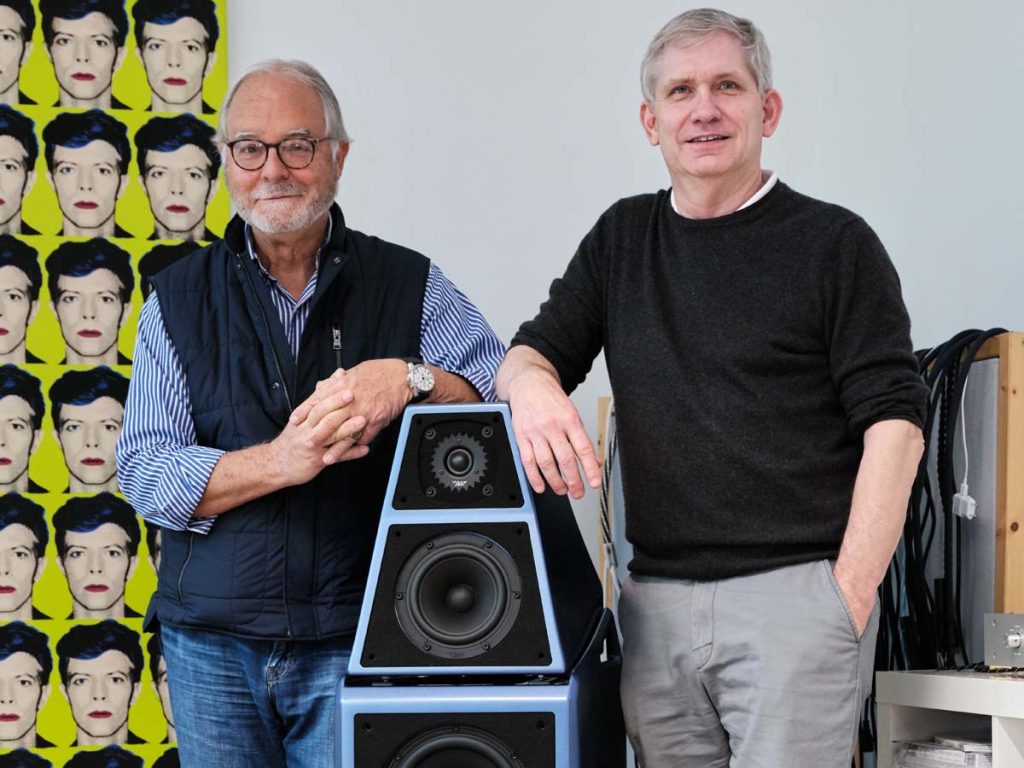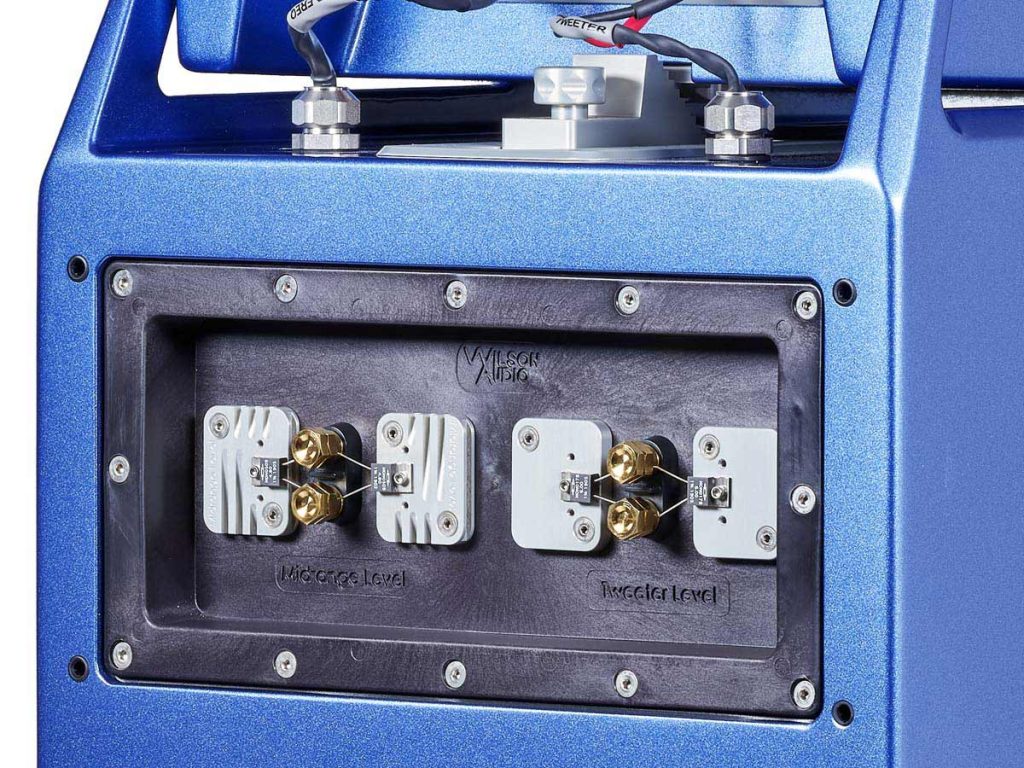The long wait is finally over.
My penchant for equipment from the US has been the subject of many stimulating interactions with interesting individuals. “I can’t believe you use that American stuff ” is a comment of the more innocuous variety, one imparted with the typical incredulity my fondness seems to induce in otherwise easygoing people. I’ve almost given up pointing out the absurdity of such sweeping statements about consumer electronics Made in America or indeed similar generalizations about equipment developed in Europe or Japan. There may, of course, be products that are “typical” of their country of origin, but the Wilson Audio Sasha DAW is definitely not one of them! In actual fact, the only thing that stops me from awarding this perfectly crafted piece of audio equipment the honorary title of “speaker for the world” is its five-figure price tag. Its compatibility, flexibility, unpretentiousness, and breadth of appeal remind me of a certain squat-looking vehicle that emerged from Germany and continues to run and run for so many folks who live in my neck of the woods decades after the manufacturer stopped producing it.
But I hear the protests already: “How on earth can he compare a VW Beetle with speakers that cost €45,000 a pair? That’s as much as a midsize sedan.” Well, it’s all a question of perspective. Besides, I know several high-end fans whose vehicles are, shall we say, rather modest, and yet they proudly own audio equipment worth upward of six-figures. Those who treat themselves to a product from Wilson Audio have definitely made the A list and never need to worry about buying different speakers again.
Does that sound too absolute and unequivocal? Have I not left enough room for personal taste? Bear with me for a moment. There’s room for some individuality (and a certain experimental urge that even highenders experience, but don’t admit to) in the choice of the electronic companions that supply the music to sound sculptures like the Sasha (or its little sister Yvette). Here at FIDELITY, the Yvette was in use for many years as a reliable monitor for testing new amplifiers and source devices ranging from turntables to streamers because it possesses a particular quality totally at odds with all the clichés about US equipment: absolute neutrality.
It took me some time to understand the importance of this. Popular wisdom tells us that completely neutral loudspeakers quickly become boring. Because they lack an “acoustic fingerprint” of their own. No euphonic subjectivity. No “sounding” — whatever that means! No eagerness to pervert reality by putting their own stamp on things. In other words, nothing that prevents them from being used as monitor loudspeakers in a recording studio. Some of the most prestigious studios in the world use speakers from Wilson Audio as part of their final testing process before master tapes are released and the CDs, vinyls, or hi-res files reach the critical ears of the public.
The Wilson Audio Sasha DAW is the most recent in a long line of internationally acclaimed “super speakers.” As the first new development to be released onto the market since the passing of company founder and mastermind David A. Wilson, it’s also a watershed. Yes, you heard me right: It’s been re-engineered. Although the Sasha DAW shares its basic sound philosophy and technical DNA with previous models, particularly its immediate predecessor Sasha 2 (see info box), this speaker is oriented much more toward the future than the past.
As I hinted above, I was a rather wary of the Yvette in the initial aftermath of its arrival at our FIDELITY listening studios in Ismaning. Although I have had and still have US hi-fi equipment at home, these are vintage devices that help me ensure the “survival” of that special sound from the ’90s. These pieces are a world apart from Wilson Audio’s integrative approach toward amps and speakers.
The Sasha DAW embodies, in perfection, the approach of building a high-quality chassis into a low-resonance housing and then carefully align it to achieve accuracy within the time domain. This is what Wilson Audio, based in Provo, Utah, has always stood for, and the youngest member of the family is no exception. And yet the Sasha, despite being a distant descendant both visually and technically of the legendary WATT/ Puppy, is much more than simply an advanced version of the same product.
It was Peter McGrath who introduced me to the qualities of Sasha’s little sister, Yvette. Besides being a tireless champion for Wilson Audio, he is one of the most respected and sought-after sound engineers on the planet, particularly when it comes to classical music. A true living legend, he normally showcases Wilson Audio loudspeakers using his own recordings — recordings that aren’t exactly available at any old retail outlet or through regular music portals. McGrath is an absolute connoisseur of classical sound. His high-resolution recordings, usually achieved with very restrained microphone setups, have a perfect interior consistency but place massive demands on any playback device. I clearly remember a baroque aria sung by a male soprano whose amazing treble levels drive most conventional tweeters to distraction. The little Wilson Audio Yvette, however, easily copes with even extreme listening material like this. Everything remains clearly audible and coherent.
The Sasha DAW can do all this, too — and a whole lot better. I slip the Sonos Sings disk into my CD player (I’m very old school in this regard, only partly due to my huge CD collection). Wilson Audio likes to use this album to demonstrate the outstanding properties of its flagship product, the WAMM Master Chronosonic. Few loudspeakers, regardless of their price, are able to offer this level of vocal presence and three-dimensionality or this degree of authenticity. Although this a cappella vocal collective flirts with electronic effects, it also creates voice-only sounds that would normally be associated with artificial aids. That’s what makes this dynamic recording, with its exceptionally broad range of frequencies, so very special. I dare anyone to say “typically American”! This is world music for a speaker created for the world.
But maybe you’re into more than just smoochy pop sung by a smallscale choir. Same here! Because I feed my stereo devices wildly different kinds of music, they have a pretty hard time at my place. One day it’s complex late-19th-century symphonies from the likes of Gustav Mahler and Anton Bruckner, the next day it’s intricate baroque music played by a small ensemble. Or modern jazz with any of its myriad spin-offs. Or hard blues-rock that people tend to mail me in my capacity as festival reporter and adviser. Or any other material my streamer or internet radio retrieves for me from the farthest reaches of the globe — including extravagantly produced plays and features that take me back to my days at the radio station.
The Sasha DAW delivers all this in a lively, energetic fashion without hiding the fact that not every piece of music is a listening revelation in its own right. But unlike various other elaborate, colorfully touted constructions I’ve come across over the last few years, it doesn’t demand absolutely top-quality recordings or need a digital signal processor (DSP) on its crossover circuitry to iron out any imperfections in my listening room (or in the weaknesses of its own design). All a Wilson Audio Sasha DAW craves is an adequate amount of care and attention during setup. Due to the adjustment options this modular sound-producing sculpture offers, setup is not quite as trivial as it may sound. For example, the angle of the midrange-tweeter module (separate from the woofer baffle with its pair of 20.3-centimeter bass drivers) can be adjusted using a mechanical “ladder” in order to ideally align the four drivers to the layout of the room and the individual preference of the listener. For the Wilson Audio team (including McGrath), this involved hours of intensive work in the FIDELITY listening room — but the result more than justifies the effort involved.
After all, what meets the ears after this initial configuration work is incredibly perfect and precise. So much that any improvement would probably involve a considerably greater investment and major changes to the listening environment. It goes without saying that a colossus like the WAMM Master Chronosonic is better than the Sasha (and not only the Sasha) in a number of respects. But anyone without a living room the size of a concert hall will be happy (and have far fewer problems) with the smaller model.
And that goes for almost any type of music. In addition to a number of transistor amplifiers, I also connected the Sashas to a tube amp from Audio Note that was a great match in terms of tone and power. In every case, the Sasha retained its natural, realistic sound and sonorous timbre. When you listen to Núria Rial and Valer Sabadus singing spiritual duets from the baroque period (Sacred Duets, Sony Music), you’re not hearing artists who’ve just been lumped together to satisfy popular taste. No, you’re being treated to a pair of motivated, inspired singers who combine philological aspiration with sensuality of tone. The old one-point recordings (Denon) of the Frankfurt Radio Symphony Orchestra conducted by Eliahu Inbal playing Mahler’s symphonies have never boasted such an outstanding expansiveness and spatial quality as they do when heard over the Wilson Audio Sasha. The “Hey Now” track on London Grammar’s debut album is notorious for its incredibly deep computer bass and has been known to “terminate” speakers and amps. Played over the Sasha, it manages to cause the listening room’s multilayered soundproof windows to vibrate, but without making the slightest impression on the speaker itself.
The Sasha did make an unquestionably great impression on me though. It goes without saying that €45,000 is no bargain in any sense of the word. But after experiencing the Wilson Audio Sasha DAW, I doubt you’ll find anything that represents a better value for the money in terms of sound quality.
The History and Technology of the Wilson Audio Sasha DAW
IMPRESSIVE ANCESTRY
An outstanding loudspeaker like the Sasha doesn’t just appear from nowhere. Sasha’s distant ancestor is the WATT/Puppy, constructed over 30 years ago by company founder David A. Wilson. This was the speaker the constructor made his name with — at a time when high-end was very much a niche topic and high-quality hifi equipment was not yet seen as a particularly relevant or desirable commodity (at least in Germany anyway). Wilson was one of the first highend developers to identify not only undesirable resonances in the housing but also run-time differences between the various drivers in a multiway loudspeaker as the reason for poor sound. In the WATT/Puppy, the faceted housing banished standing waves, resonances were controlled by implementing various measures, and the individual drivers were aligned to achieve accuracy within the time domain.
FIDELITY’s managing director, Ingo Schulz, was one of the audiophiles lucky enough to acquire a WATT/Puppy in the late 1980s, and he can attest to the perfection of its engineering. After a few years of listening to this speaker, however, Schulz, who has a very clear idea of the sound he likes, decided it was time for a change. In the pursuit of “something new,” he purchased the top model offered by a “well-known Italian loudspeaker manufacturer.” But, despite its obvious qualities, this speaker couldn’t equal the more direct and exciting performance of the WATT/Puppy. And, despite the Italian speaker’s larger volume, it wasn’t able to achieve the same fullness of sound. The consequences were inevitable: The Italian had to go. A few months later, a new WATT/Puppy moved into the Schulz household, where it’s still performing to this very day. Robustness and a long service life were also on the list of specifications for the Sasha DAW. In memory of the great David A. Wilson, it carries his initials in its product name.
This can be seen as both a tribute and a pledge of continuing commitment to his ideals. The founder’s son Daryl Wilson has retained all the positive attributes of the WATT/Puppy and its successors, such as the multiple enclosures that, among other things, prevent the woofer section and midrange tweeter from adversely affecting each other through acoustic bridges. The internal volume of the Sasha DAW is slightly greater than that of its Sasha 2 predecessor. At 114 centimeters high, 58.3 centimeters deep, and 27 centimeters wide, the Sasha is a sturdy floor-standing box in which the clever antiresonance measures have contributed to its hefty weight of 107 kilograms. As well as boasting a wonderfully offbeat design, the speakers are available in a wide range of colors; our test model was cobalt blue.
Wilson doesn’t provide any exact details about what the enclosures are made of, except to point to the company’s proprietary composites known as “x-material” and “s-material.” The practical “knock test,” however, results in a dull thud, indicating a practically vibration-free construction. When it comes to speaker chassis, Wilson Audio has traditionally relied on its in-house developments. In the Sasha DAW, the drivers are state of the art. Bass power is provided by two 20.3-centimeter drivers (with a reflex port at the rear). The midfrequency range, eminently important for vocals, is taken care of by a 17.8-centimeter driver, and the familiar 2.5-centimeter “Wilson Convergent Synergy tweeter” (in the fifth-generation version) handles the rest. The binding posts for the speakers (in the midrange-tweeter cabinet) are of the heavy-duty variety, making them also suitable for thicker cables, and offer a banana plug option.
At four ohms, the nominal impedance is more than adequate; and the sensitivity, an impressive 91 decibels, offers an efficiency level that also makes it possible to use less powerful amplifiers. Although Wilson Audio recommends a minimum of 25 watts, the Sasha DAW performed well in our tests with the 8 watts our small Zero integrated amp from Audio Note is able to produce, delivering that firework of tones that is so typical of tube amplifiers.
The Sacha DAW is not a compact speaker in any sense of the word. Ideally, it’s best to place the speakers at an adequate distance from the rear and side walls. But they produce a homogeneous and coherent tone in smaller rooms as well, assuming they’re combined with great-sounding devices, of course (that don’t necessarily need to be all that powerful).
Accompanying equipment
CD players: Audio Note Zero, Mark Levinson 390s | SACD players: Marantz SA14 V1, Sony SCD 333 ES, Pioneer D6 | Turntables: Clearaudio Innovation Compact, SoReal Audio Seismograph, Dr. Feickert Volare | Cartridges: Clearaudio Da Vinci and Jubilee MC, Denon DL-103R | Phono stage: Musical Fidelity M-VNYL, Clearaudio Basic | Integrated amplifiers: Audio Note iZero, Marantz HD-AMP1 | Preamplifiers: Mark Levinson No. 38S, Trigon SnowWhite, Marantz SC-22 | Power amplifiers: Mark Levinson No. 27, Marantz MA-22, John Curl JC3, Trigon Dwarf II | Loudspeakers: KEF R900, Infinity Kappa 7.2 Series II, MuSiCa NoVa PlethorA
Floor-standing loudspeaker
Wilson Audio Sasha DAW
Functional principle: Three-way passive loudspeaker, bass reflex | Design of top module: X- and S-material cabinet with rear slot-vented midrange section | Design of woofer module: X-material cabinet with rear opening | Drivers: 2.5-cm Wilson Convergent Synergy Mark V tweeter, 17.8-cm Wilson midrange driver, two 20.3-cm Wilson bass drivers | Sensitivity: 91 dB | Impedance: 4 Ω | Frequency response: 20 Hz to 30 kHz (±3 dB) | Recommended power: > 25 W | Finishes: Obsidian Black, Galaxy Gray, Titanium Brown, Desert Silver, Argento Silver, Cobalt Blue, Mariposa Silver, Sandlewood, Lavender | Dimensions (W/H/D): 37/114/58 cm | Weight: 107 kg | Warranty period: 10 years | Price per pair: €45,000

